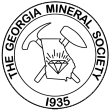Equipment required
by
Dave Babulski, Ed.D.
( "Tips and Trips", Vol. XXXI/6, June 2002, page 7.)

In the last column we learned a bit about the "what and why" of mineral micromounting. This month we will discuss some of the equipment required to participate in this aspect of mineral collecting.
The central piece of equipment is, of course, the microscope. In micromounting, the microscope type of choice is the stereo microscope. A stereo microscope is really two monocular microscopes placed side to side such that there is an eyepiece for each eye. Each eyepiece looks through its own objective lens. In this way each eye sees the specimen from a slightly different angle. When the two images are combined in the brain, a magnified 3D image appears.
The type of instrument you should select can be summed up in three words: "Optics, Optics, Optics". I highly recommend that you buy the best optics that you can afford. The least amount you can expect to pay for good optics is a little less than $200. Of course you can spend as much as $6,000 for high quality optics with all the "whistles and bells". I use an inexpensive fixed 20X stereomicroscope to initially examine specimens during the mounting process. I also use an Edmund Scientific trinocular stereo microscope fitted with a Nikon SLR camera for taking photomicrographs of micromounts. A third instrument, a Motic K4000 stereo microscope is fitted with a camera lucida for use in the art studio. This instrument is used when creating paintings of micro- minerals. (Both of these instruments are in the $1000 class)
A good starter microscope is the Edmund Scientific A81- 273. This is a fixed 20X stereo microscope which can be had for about $195.00. (The web address forEdmund Scientific is; http://www.edmundoptics.com
Another low cost entry level stereo microscope is the Wolfe S10. This is another fixed 20X instrument. Additional accessories are available to increase the magnification. I do not recommend the higher magnifications as the optics in the Wolfe instrument are a bit marginal. You will find that for most micromounts a magnification of 20X is sufficient. This microscope is available from Carolina Scientific for about $135. The web address for Carolina is: http://www.carolina.com .
Another important piece of equipment for mineral micromounting is a good light source. A good place to start is an inexpensive halogen desk lamp. This has the advantage that the lamp can be used for other purposes as well. I have developed an inexpensive color corrected miniature light source for use with the microscope. An article describing construction of this light source is being published in the July/August issue of Rocks and Minerals magazine.
O.K. so now that you have the microscope and the light source, what about the minerals? Micromounts can be found in the same places that cabinet size specimens are found. You must just look more carefully. A good hand lens is indispensable when collecting in the field. Another source is mineral dealers. Most mineral dealers at shows will have flats of thumbnail size minerals. These are excellent sources for micromounts. In most cases, a good thumbnail can yield as many as six good micromounts. Of course the larger size specimens must be broken down to micromount size, but that is a topic for the next column. Until next month, may all your vugs be crystal filled.

Copyright © Georgia Mineral Society, Inc.
